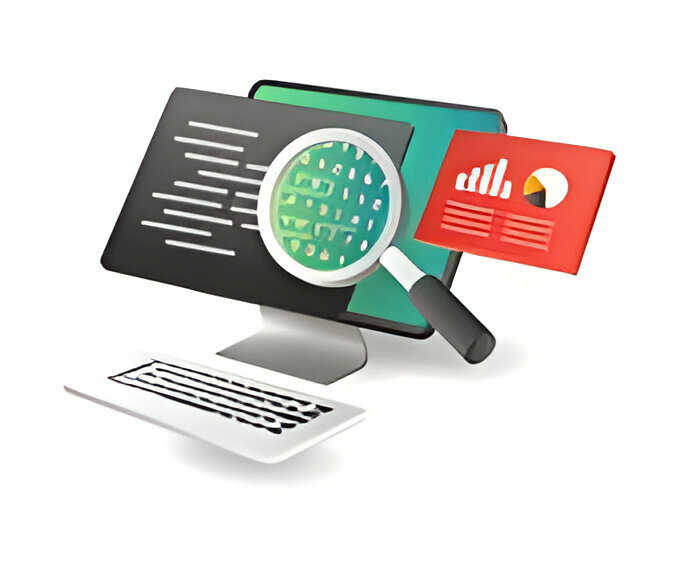What is the Job of a Data Wrangler

A new profession that has emerged and gained tremendous significance in the constantly developing field of data science is the Data Wrangler role. In the data analysis pipeline, this role—also referred to as a data munging professional—is essential. The primary duty of the data wrangler is to transform unprocessed data into a more readable format so that crucial insights may be extracted quickly.
Photo by madartzgraphics on Pixabay
Positioning Data Wranglers: The Who, Why, and What
What is the Role of a Data Wrangler
A vital stage in the data analysis process is data wrangling, also known as data munging. In order to transform unstructured data into a format better suited for analysis, it must be cleaned, organized, and enhanced. The following are included in the data wrangling process:
- Cleaning: To ensure the accuracy of the data, the data wrangler carefully removes mistakes, inconsistencies, and duplication.
- Data structuring: To facilitate manipulation in analytical applications, data is frequently organized into tabular form.
- Enriching: The wrangler ensures the quality and accuracy of the data by validating it and adding extra information to make it more valuable for analysis.
What is the Importance of Data Wrangling
There are multiple reasons why data wrangling is becoming more and more relevant.
- Volume and Variety of Data: To handle and evaluate this vast and varied data, efficient data wrangling is required due to the explosion of data coming from multiple sources.
- Advanced Analytics and AI: Data wrangling satisfies the need for high-quality data that advanced models require.
- Faster Decision Making: By speeding up data preparation, data wrangling facilitates quicker data analysis and insight creation.
- Compliance and Data Governance: Data wrangling helps to ensure regulatory compliance in light of the growing laws governing data protection and use.
- Improved Data Accuracy and Quality: The process of data wrangling makes data more accurate and high-quality, which increases the dependability of the insights that can be drawn from it.
What are the Responsibilities of a Data Wrangler
The responsibilities of a data wrangler go beyond simple data transformation. It consists of:
- Data Gathering: Data wranglers get unprocessed data from multiple sources.
- Data Cleaning: Data wranglers deal with missing values in the data, fix errors, and eliminate inconsistencies.
- Data Structuring: To guarantee format and unit consistency, they parse data into organized fields and normalize it.
- Data enrichment is the process of combining information from several sources to produce new features or variables that can offer more insights.
- Data validation: Following data cleaning, organization, and enrichment, data wranglers guarantee data quality and accuracy.
- Data Storing: After all the data has been sorted, it is kept in a data repository where it is available for reporting and analysis.
- Data wranglers record any changes made to the data, including transformations, and document the data transformation process.
What are the Advantages of Data Wrangling
Data wrangling offers several benefits that substantially amplify the value of data for businesses and organizations. By converting raw data into a more structured and clean format, data wrangling paves the way for more accurate, efficient, and insightful analysis.
Improved Data Quality
Through data wrangling, the quality of data significantly improves. Data wrangling ensures that the data used in analysis is accurate, consistent, and reliable, which is fundamental for making informed decisions and gaining reliable insights.
Enhanced Analytical Efficiency
Data wrangling makes the data preparation process more streamlined, making data analysis more efficient. By leveraging automation for routine tasks and using advanced data cleansing and organization tools, data scientists and analysts can dedicate more time to core analytical work, thus accelerating the analytical process.
Facilitation of Advanced Analytics and Machine Learning
Data wrangling transforms raw data into a format that advanced analytics and machine learning models can easily process. This facilitates more sophisticated analyses, leading to more accurate and insightful outcomes.
Data Integration from Multiple Sources
Data wrangling aids in the integration of data from diverse sources, standardizes formats, and resolves discrepancies to create a cohesive dataset. This is crucial for comprehensive analysis, providing a more holistic view of the subject matter.
Compliance and Data Governance
Data wrangling is vital in ensuring data is processed and managed according to legal and ethical standards. By cleaning and structuring data, organizations can better manage their data governance policies, ensuring that personal and sensitive information is handled correctly.
Empowered Decision-Making
The ultimate goal of data wrangling is to enable better decision-making. Data wrangling ensures that data is clean, structured, and enriched, leading to more effective strategies, improved operational efficiencies, and an enhanced competitive advantage in the market.
Scalability
As organizations grow and the volume of data they handle increases, data wrangling processes and tools can be scaled to meet growing demands. Effective data wrangling practices ensure that businesses can manage larger datasets without a proportional increase in errors or degradation in the quality of insights.
What Tools are Used for Data Wrangling
Understanding the tools and technologies available for data wrangling is vital for effectively cleaning, structuring, and enriching data. These tools range from simple spreadsheet applications to sophisticated data science platforms.
Basic Tools
These include spreadsheet software like Microsoft Excel or Google Sheets, which are accessible and straightforward for simple data tasks such as filtering, sorting, and basic computations.
Programming
Python and R are popular languages for data science, offering extensive libraries and packages for data wrangling, such as Pandas and dplyr, respectively. These languages provide flexibility and power for complex data manipulation tasks.
Dedicated Data Wrangling Software
Tools like Trifacta, Alteryx, and Talend are designed specifically for data wrangling. They often provide a graphical interface to simplify the process of cleaning, transforming, and enriching data.
Integrated Data Science Platforms
Platforms like KNIME, RapidMiner, and Dataiku offer comprehensive environments that include data wrangling capabilities alongside other data science functionalities. These platforms are suitable for end-to-end data projects, from wrangling to modeling and visualization.
Data Wrangling vs. ETL
Data wrangling and ETL (Extract, Transform, Load) are crucial in managing and preparing data. While they share some similarities in transforming data, there are distinct differences in their approaches, tools, and primary objectives.
Here’s a comparative overview in table format:
| Feature | Data Wrangling | ETL |
| Definition | Cleaning, structuring, and enriching raw data to make it more suitable for analysis. | Extracting data, transforming it into a structured format, and loading it into a target database. |
| Primary Goal | To prepare data for exploratory data analysis by making it more accessible and understandable. | To consolidate data from multiple sources into a coherent data warehouse ready for analysis or reporting. |
| User Base | Primarily data scientists, analysts, and sometimes business users. | IT professionals and data engineers. |
| Tools Used | Spreadsheet applications, programming languages, and dedicated software. | ETL tools like Informatica, Talend, SSIS, and data integration platforms. |
| Focus | It often takes an ad hoc approach to dealing with data inconsistencies, missing values, and formatting. | Structured and automated, focusing on efficiency, scalability, and reliability in processing large data volumes. |
Exploring a Career in Data Wrangling
For individuals with a knack for organization and a desire to explore unconventional ways to be part of research, a career trajectory in data wrangling can be a viable option. New data is always emerging, and an employer will need someone to organize it.
Data wrangling positions often require a deep understanding of databases, electronic health records (EHRs), and practice management systems. Candidates must also understand the healthcare environment to some extent.
Moreover, candidates must have the ability to work with multiple entities (both staff and vendors) in a complex environment. These positions also involve developing and implementing routine monitoring of clinician and practice metric performance for both internal trending and against external benchmarks.
Conclusion
Data wrangling, in essence, is a critical role in the data analytics landscape. It ensures that raw data is efficiently cleaned, structured, and enriched to provide a solid foundation for accurate analysis and decision-making. The role of a data wrangler is a unique blend of technical skills, problem-solving abilities, and meticulous attention to detail. As the demand for high-quality data grows, the importance of data wranglers in the data analytics ecosystem is set to rise further.




